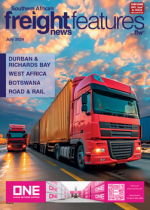Road and rail have long been at odds, each vying for prominence as South Africa tries to find answers to its logistics crisis. However, the solution lies in leveraging both modes of transport. Without a cohesive strategy that integrates both road and rail effectively, South Africa’s economic growth could stagnate, according to Professor Jan Havenga, a director at the GAIN Group and a logistics lecturer at the University of Stellenbosch.Addressing members of the Road Freight Association (RFA) at the annual convention in the Western Cape, Havenga made no secret of his longstanding advocacy for rail but emphasised that to improve logistics efficiency in South Africa both modes of transport were required.“The current embedded logistics costs for any commodity in South Africa averages more than 50%. Improving efficiency in logistics will enhance competitiveness and reduce costs across the country,” he said, indicating that there were a few golden years in the early 2000s when logistics costs were kept low. The figure has, however, steadily been rising and at present has reached unsustainable levels."If you superimpose a map of South Africa on Europe, you'll see that the country is about the same size as France or Germany. However, the GDP of those countries is approximately 18 times higher than South Africa's. We are a spatially challenged country where transport is a critical commodity. The rising cost of logistics clearly indicates that this issue has not been adequately addressed,” he said.He added that with insufficient investment in rail, trucks had taken over the job, but this had come at a cost. “At least half of the trucks on South African roads should not be there; that cargo should be on rail. We need to reduce the number of truck kilometres in the country significantly. At the same time, we need to grow the railways five times over. This is not just about a modal shift but also about reducing the country’s carbon emissions.”He acknowledged that the road freight sector was highly efficient but stressed that around 40% of all trucks were owned by just seven companies. In the mining sector, approximately 40% of the cargo currently moved by road should be transported by rail. For intermediate manufacturing, 65% of road freight should be on rail, along with 70% of finished palletised goods. Additionally, 90% of goods for rural extraction and delivery currently transported by road should also be moved by rail.Havenga estimated that addressing the dysfunction in the country’s logistics system could boost South Africa’s GDP by 5%.

